Microchip TC648 Handleiding
Bekijk gratis de handleiding van Microchip TC648 (8 pagina’s), behorend tot de categorie Niet gecategoriseerd. Deze gids werd als nuttig beoordeeld door 31 mensen en kreeg gemiddeld 4.5 sterren uit 16 reviews. Heb je een vraag over Microchip TC648 of wil je andere gebruikers van dit product iets vragen? Stel een vraag
Pagina 1/8

2003 Microchip Technology Inc. DS91063A-page 1
TB063
INTRODUCTION
Less than six years ago, thermal cooling in the
electronics arena was mainly an issue for high-
performance, high-end applications, such as, military,
aerospace and large-scale industrial and medical
applications. Outside these sectors, thermal cooling
was just a premature notion. In the short span of a few
years, technological and other developments have
made thermal cooling necessary for many applications,
thus requiring the development of a new system
management category: thermal management.
This article discusses an integrated fan speed solution
that provides sophisticated speed control of brushless
DC fans, the most popular type of fan used in electronic
equipment, and helps designers get around problems
like acoustic noise, power consumption, mechanical
wear-out and fault detection.
TRENDS AND DRIVERS
On a board level, many more components need cooling
today than even six months ago; with the CPUs having
begun this trend some years ago. Memory chips never
needed cooling, but now SRAM and DRAM packages
require their own cooling solutions. Video card
processors (mostly the 3D type) and other add-in cards
also require cooling, as will the next generation models.
Hard drives, DVD players, CD players and chipsets are
now candidates for cooling as well. In general, board
speeds are becoming faster and boards are becoming
smaller and more heavily populated. Package
densities are increasing and performing more
functions, thus getting hotter.
New developments in digital chip architecture permit
higher system clock rates and additional on-chip
circuitry, causing the chips to run at higher tempera-
tures. A large portion of the power dissipation is the
capacitive charging and discharging during level transi-
tions. Since the power lost is related to the square of
the supply voltage, the trend to lower voltages reduces
power dissipation.
However, higher losses due to higher switching
speeds, significantly offset these savings. An example
is the 486 microprocessor, which was drawing 12 to 15
watts. As PCs moved into the first Pentium®
generation, the microprocessors started dissipating
25W. Today a Pentium® II dissipates about 40W, and
there have been reports that the forthcoming 64-bit
Merced microprocessor dissipates about 65W.
Thermal cooling is also in demand because of the
explosive growth of new embedded applications.
Telecommunications equipment, printers, household
“smart” appliances, and most importantly, networking
equipment (routers, switches and hubs) are only a few
of the products now driven by embedded CPUs. More
are being added each day, and with the complexity of
multiple functions, thermal cooling has become a
necessity.
WHY DO WE NEED COOLING?
The air immediately surrounding a chip initially cools its
surface. That air eventually warms and rises to the top
of the PC or other equipment’s chassis, where it
encounters more warm air. If not ventilated, this volume
of air becomes warmer and warmer, offering no avenue
of escape for the heat generated by the chips.
Typically, a PC chip designed for commercial use can
withstand up to 125°C – 150°C junction temperature,
although a safety margin of a few degrees might be
specified. Exceeding that limit will either cause the chip
to make errors in its calculations or fail completely. A
chip failure or malfunction impacts the entire system’s
operation. Additional cooling also extends component
life by limiting the maximum temperatures the
components are exposed to. In general, a 10°C
temperature reduction will provide a 2:1 increase in
MTBF (Mean Time Between Failure).
Author: George Paparrizos
Microchip Technology Inc.
An Integrated Fan Speed Control Solution Can Lower
System Costs, Reduce Acoustic Noise, Power Consumption
and Enhance System Reliability

TB063
DS91063A-page 2 2003 Microchip Technology Inc.
THERMAL COOLING METHODS
Consistent with the trend of increasing heat dissipation
in electronic systems, the thermal cooling methods
began moving from passive to active solutions. In the
days of the 486 microprocessor, the processor cooling
was implemented by a heat sink and an embedded fan
was only used to cool down the power supply. Since
entering the Pentium era, the processor now produces
enough heat to require a stream of cool air from a fan.
In addition, new 3D graphic cards generate substantial
heat and are also packaged with an embedded fan on
top of the graphic chip.
To date, there are three basic approaches to thermal
cooling: heat spreaders, heat sinks and fans:
1. Heat spreaders, which are made of a tungsten-
copper alloy and are placed directly over a chip,
have the effect of increasing the chip’s surface
area, allowing more heat to be vented upward.
Heat spreaders are frequently designed with a
specific chip in mind.
2. Heat sinks spread the heat upward through fins or
folds, which are vertical ridges or columns that
allow heat to be conducted in three dimensions -
length, width, and height - as opposed to the two-
dimensional length and width of heat spreaders.
Heat sinks maximize the amount of surface area
that can be air-cooled.
3. Fans simply focus the available air on a
concentrated space. The cooling capability of a fan
depends on the volume of air the fan moves, the
ambient temperature and the difference between
the chip temperature and the ambient tempera-
ture. While fans move volume of air, some PC
systems also require blowers to generate air
pressure.
BRUSHLESS DC FANS
Thermal complexity, thermal content and greater power
demands are boosting the popularity of brushless DC
(BDC) cooling fans (Figure 1). In addition to the
advantages of conventional fans, BDC fans have a
significantly higher mechanical reliability. They contain
no rotating commutator/brush assembly to shed dust
particles, wear out, or act as an ignition source.
Additionally, their magnetic coils are stationary and are
usually mounted within a rigid frame for superior
structural integrity and thermal dissipation. Finally, they
lack the rotating magnetic fields of AC motors and the
arching of conventional DC motors and, thus, are
electrically quiet.
While BDC fans adequately evacuate heat from the
system enclosure and are superior to conventional
fans, they add other problems. Such problems that
designers have to cope with in most applications are:
• Fan Mechanical Wear-out
• Acoustic Noise
• Power Consumption
• Fault Detection
The sections that follow provide an in depth summary
of the above mentioned problems and describe the
features, operation and advantages of Microchip’s
integrated fan speed control solution.
FIGURE 1: Brushless DC Fan Basics
Stator
Coil
Stator
Coil
Stator
Coil
Stator
Coil
Internal Control IC
Hall Effect
Sensor
Fan
Frame
Axle
Fan Hub
Center
Bearing Permanent
Magnets

2003 Microchip Technology Inc. DS91063A-page 3
TB063
FAN MECHANICAL WEAR-OUT
The fan is a complex electromechanical device and, in
most cases, requires replacement before the lifetime of
its host system expires. In the majority of cases, the fan
failure is caused by the failure of the bearing, due to
heat and mechanical wear. Other causes include
blockage by foreign objects and electrical failures.
Fan failure is a very important issue for the manufac-
turer in terms of end-product reliability and quality. A
fan replacement reduces the customers’ perception of
product quality and increases their indirect expendi-
tures. The cost of a replacement part (fan), the installa-
tion cost and the opportunity cost associated with the
non-utilization of the equipment can add up to a
significantly higher cost for the user. Therefore, from an
economical standpoint, a solution that ensures a longer
fan service life is a value-added feature of the
equipment and a good marketing tool.
Microchip’s fan controller ICs provide sophisticated
temperature-proportional, fan speed control. The fan
runs only as fast as is required to keep the system cool.
This extends the service life of the fan because it is not
subject to the stress imposed by continuous full-speed
operation and speed changes are gradual (vs. an on/off
operation). A typical speed control solution can be
expected to have a mean time between failure (MTBF)
far greater than a typical fan running at full speed.
Figure 2 demonstrates the fan life versus speed rela-
tionship by showing the L10 life values (the time at
which one expects 90% of the fan population to
survive) of a sleeve-bearing fan running at several
speeds and different operating temperatures. A 35%
speed reduction more than doubles the L10 life values,
independent of the operating temperature. These
savings are attributed solely to lower average operating
speeds. In addition to these quantifiable benefits, one
should expect significantly higher L10 life values from
gradual fan speed changes versus conventional
aggressive on/off operation. An on/off operation
generates shocks, resulting in a hostile environment for
the fan’s structure and/or bearing system.
Ball-bearing fans perform better in terms of L10 life
values. However, they also cost significantly more
than sleeve-bearing fans.
FIGURE 2: Fan Life vs. Fan Speed
ACOUSTIC NOISE REDUCTION
Noise is another important factor in the perceived
quality of a product. Everything else held constant, a
quieter product will always be preferred over a louder
one. Noise reduction is a challenging task for
designers, yet it is a differentiating attribute for the
marketing of the product.
The most dominant source of acoustic fan noise is
turbulent airflow, which is caused by fan operation at
full speed. Employing fan speed control, where the fan
is operating primarily at lower than full speed,
minimizes this noise. The second most dominant
source of acoustic noise is due to the BDC fan’s torque
characteristics. In this case, stator excitation causes a
small amount of ripple in motor torque at the frequency
of commutation, which again leads to a “ticking” noise.
Correcting noise problems becomes an even greater
challenge when moving to multiple-fan applications. If
you package several chassis in a rack and put several
racks in a room, the combined noise can be deafening.
Most designers choose fans for worst case thermal
conditions, which has a downside effect under normal
thermal operation: additional, unnecessary acoustic
noise.
A small change in fan speed causes a significant
change in fan noise. The formula used to determine the
noise level, when the fan is running at speed S (% of
SMAX), is as follows:
EQUATION:
A typical fan (120 ft3/minute – 4.7”) has a full speed
noise rating of about 45 dB. Running the fan at half
the speed results in a significantly lower noise level
of 30 dB. This 15 dB change is perceived by the
human ear as an approximately 70% noise
Fan Life vs. Fan Speed
L10 Life (k Hours)
Fan S
p
eed
(
RPM
)
120
100
80
60
40
20
0
2900 2450 2090
40 C°
50 C°
60 C°
70 C°
3320
140
LS = L1 + 50 log S
Where LS is a weighted noise level at fan speed S
and L1 a weighted noise level at full speed.
Product specificaties
| Merk: | Microchip |
| Categorie: | Niet gecategoriseerd |
| Model: | TC648 |
Heb je hulp nodig?
Als je hulp nodig hebt met Microchip TC648 stel dan hieronder een vraag en andere gebruikers zullen je antwoorden
Handleiding Niet gecategoriseerd Microchip

14 Mei 2025

6 Mei 2025

6 Mei 2025

6 Mei 2025

6 Mei 2025

6 Mei 2025

6 Mei 2025

6 Mei 2025

6 Mei 2025

6 Mei 2025
Handleiding Niet gecategoriseerd
- ToughTested
- Yukon
- Kranzle
- Mirpol
- Adax
- Plant Craft
- BDI
- Trigano
- SMC
- Slik
- Tanita
- Sensiplast
- Orei
- Stinger
- Revlon
Nieuwste handleidingen voor Niet gecategoriseerd
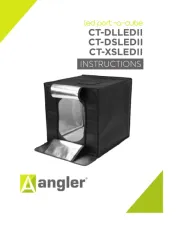
18 September 2025

18 September 2025
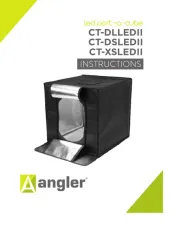
18 September 2025

18 September 2025
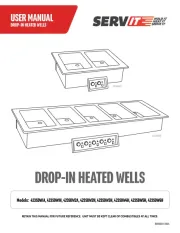
18 September 2025
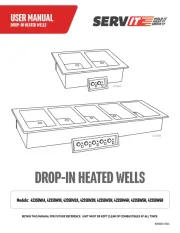
18 September 2025

18 September 2025

18 September 2025

18 September 2025
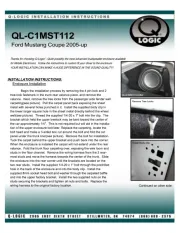
18 September 2025